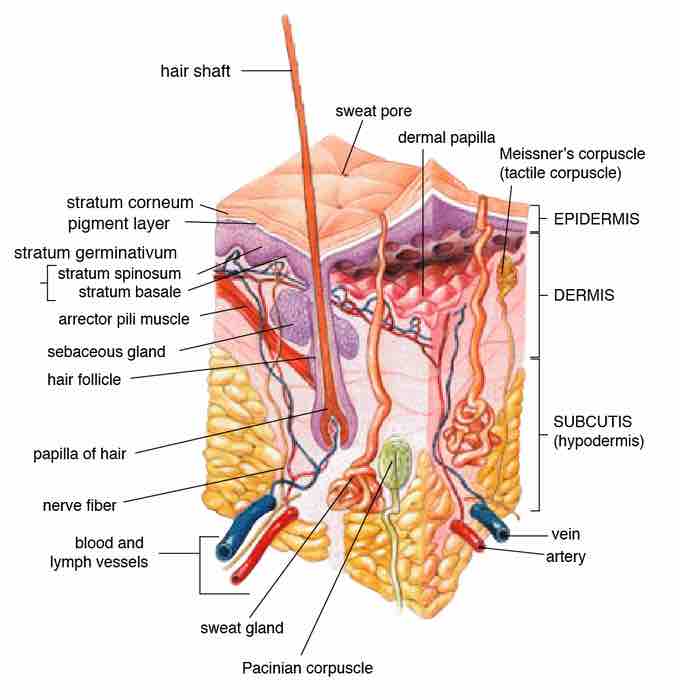The human skin is the outer covering of the body. In humans, it is the largest organ of the integumentary system. The skin has multiple layers of ectodermal tissue and guards the underlying muscles, bones, ligaments and internal organs. Human skin is similar to that of most other mammals, except that it is not protected by a pelt. Though nearly all human skin is covered with hair follicles, it can appear hairless. There are two general types of skin, hairy and glabrous skin. The adjective cutaneous literally means "of the skin" (from Latin cutis, skin).Because it interfaces with the environment, skin plays a key role in protecting the body against pathogens and excessive water loss. Its other functions are insulation, temperature regulation, sensation, synthesis of vitamin D, and the protection of vitamin B folates. Severely damaged skin will try to heal by forming scar tissue. This is often discolored and depigmented.In humans, skin pigmentation varies among populations, and skin type can range from dry to oily. Such skin variety provides a rich and diverse habitat for bacteria which number roughly at 1000 species from 19 phyla. The skin is the largest organ in the human body. For the average adult human, the skin has a surface area of between 1.5-2.0 square metres (16.1-21.5 sq ft.), most of it is between 2–3 mm (0.10 inch) thick. The average square inch (6.5 cm²) of skin holds 650 sweat glands, 20 blood vessels, 60,000 melanocytes, and more than 1,000 nerve endings Fig .

Skin.
A diagram showing the structure and different components of human skin.
Skin Structure.Skin has mesodermal cells, pigmentation, or melanin provided by melanocytes, which absorb some of the potentially dangerous ultraviolet radiation (UV) in sunlight. It also contains DNA-repair enzymes that help reverse UV damage, and people who lack the genes for these enzymes suffer high rates of skin cancer. One form predominantly produced by UV light, malignant melanoma, is particularly invasive, causing it to spread quickly, and can often be deadly. Human skin pigmentation varies among populations in a striking manner. This has led to the classification of people(s) on the basis of skin color. The Skin is composed of three primary layers:the epidermis, which provides waterproofing and serves as a barrier to infection; the dermis, which serves as a location for the appendages of skin; and the hypodermis. The three primary layers of skin are themselves comprised of other sub-layers.